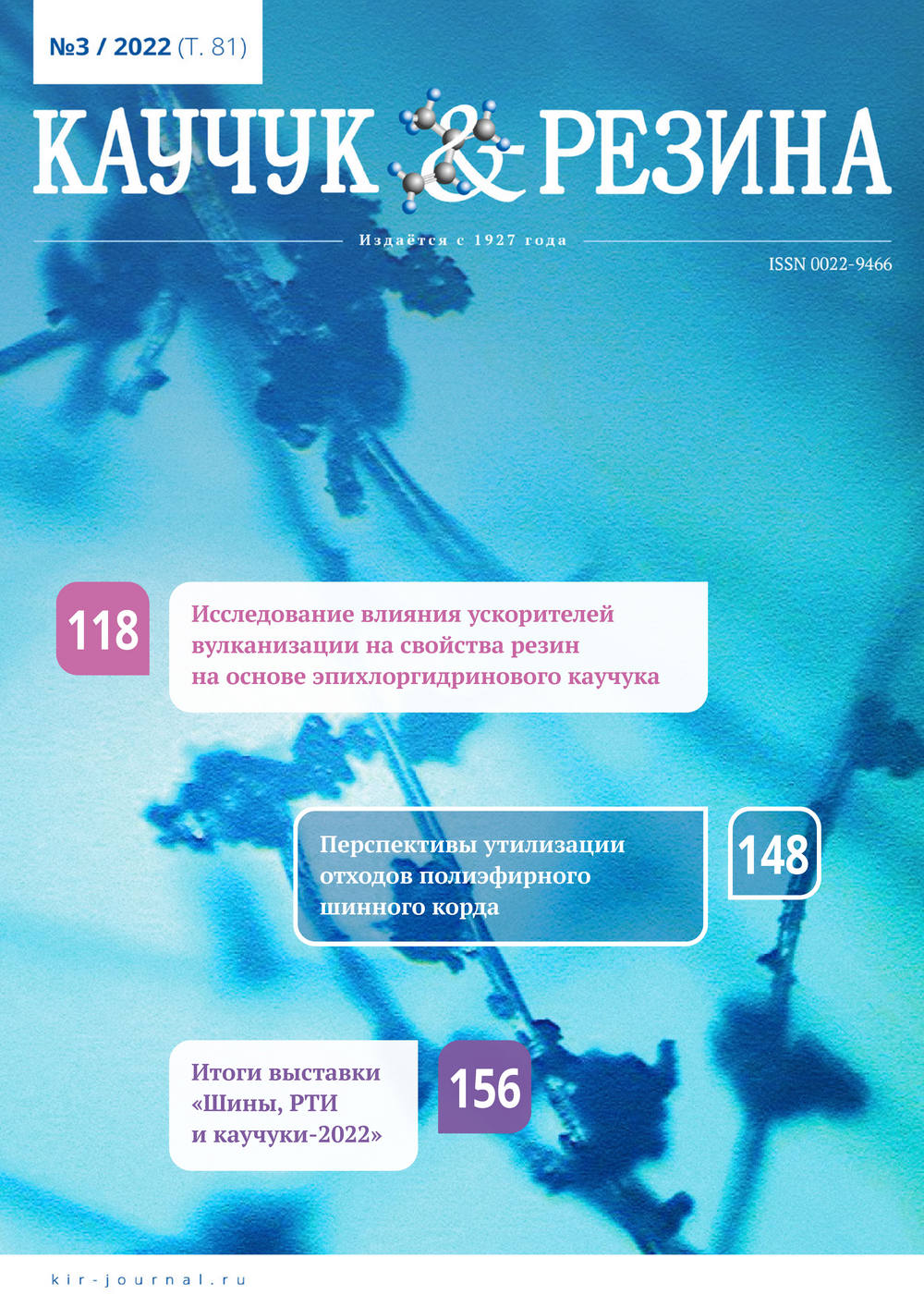Liquid-Phase Filling of SBR with Furnace Carbon Black in Ultrasonic Field
Published 2022-07-24
How to Cite
Abstract
Changes in the components properties as a result of ultrasonic exposure (USE) during the production of elastomer compositions (EC) based
on SBR of SKS-30ARK grade at the stage of latex (L) and aqueous dispersions of furnace carbon black (CB) of grades: N220; N330 and N550
was studied in the work. CB grades used differ in the size of secondary aggregates, but have increased porosity. The influence of USE duration
τ from 0 to 30 min at a temperature of 25 oC on the surface tension and hydrodynamic radius Rh of particles L with a rubber content of 1,0;
5,0; 10,0 and 20,0 % (wt.), as well as the particle size of CB in an aqueous medium, dispersed in leucanol, was measured. An UZG13-0,1/22
brand dispersant of a specific power of 100 W/dm3 was used. The surface tension was determined on a Du Nouy tensiometer (Paul N. Gardner,
США). The Rh of L particles was determined on a PortLab511 spectrophotometer in the wavelength range of 190–1100 nm (photometric
accuracy ± 0,5 %). Measurements of the molecular weight distribution of rubber were carried out on a Breeze gel chromatograph («Waters»)
with a refractive index detector. Liquid-phase filling (LF) during USE is achieved by disturbance of latex particles aggregative stability due to
the redistribution of emulsifying components from the surface of latex globules to the CB developed surface formed as a result of USE. LF with
the use of CB aqueous dispersion and high-intensity USE improves the properties of the filled rubber and makes it possible to exclude the use
of coagulating agents during isolation of filled rubber from L.

